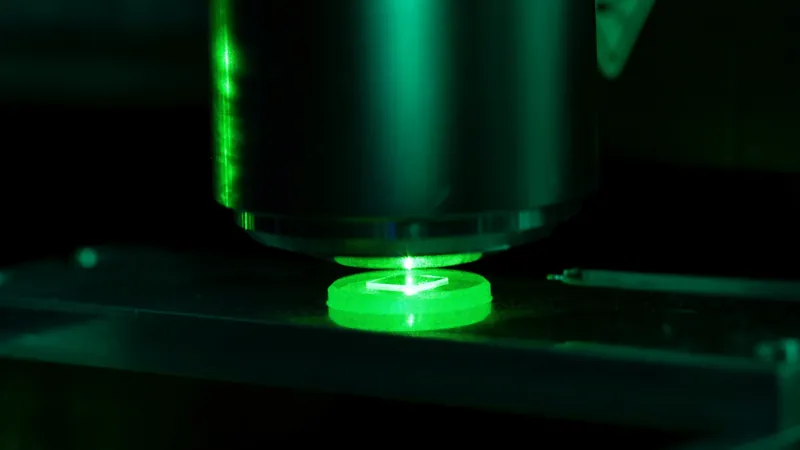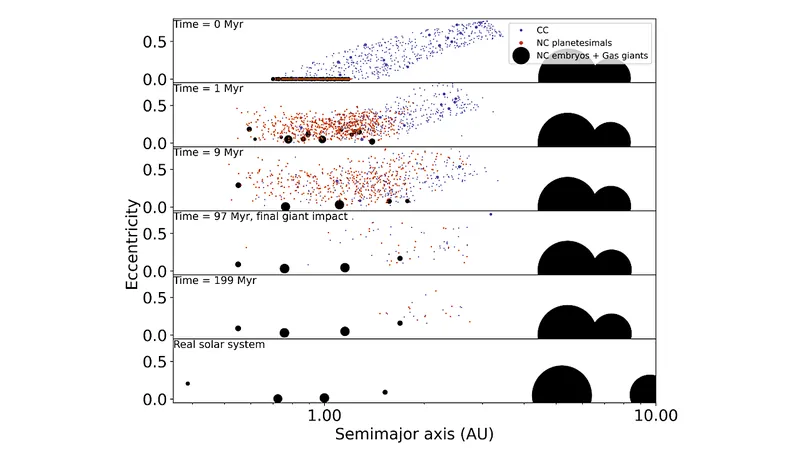
Discover How Diamonds Are Shaping the Future of Quantum Computing!
2024-11-07
Author: Yu
Discover How Diamonds Are Shaping the Future of Quantum Computing!
In a groundbreaking development poised to revolutionize quantum computing, European scientists are embarking on an ambitious project known as SPINUS, funded by a €10 million (approximately $10.8 million) consortium. This innovative initiative seeks to create a room-temperature quantum computer utilizing the unique properties of synthetic diamonds and silicon carbide.
What Makes the SPINUS Project Special?
The SPINUS project is leveraging nitrogen-vacancy (NV) centers embedded in specially engineered diamonds to develop programmable qubits. Unlike traditional quantum computers that can only operate at frigid temperatures close to absolute zero, SPINUS aims to operate at room temperature. This potential advancement could significantly enhance the practicality, scalability, and accessibility of quantum computing technologies.
Revolutionizing Computation Efficiency
With NV centers, SPINUS aims to forge ahead with quantum simulators featuring over 50 qubits and quantum computers with over 10 qubits. The goal is ambitious yet tantalizing: scale these up to 1,000 and 100 qubits, respectively, within five years. The implications of these advancements stretch far and wide—transforming industries such as drug discovery, optimization, and materials science by providing a computational power that classical computers struggle to achieve.
Understanding the Mechanism: Nitrogen-Vacancy Centers
The diamonds used in SPINUS aren’t the types that adorn jewelry. These are synthetic diamonds meticulously crafted in laboratories, designed specifically for quantum technology. The NV centers are created by altering the crystal structure of the diamond: removing two adjacent carbon atoms, replacing one with nitrogen, and leaving a vacancy that can capture an electron. Through laser pulses, scientists can manipulate the electron spin at these centers, turning them into the qubits necessary for quantum computing.
According to Martin Koppenhöfer, the project coordinator, “By controlling the amount and positioning of these NV centers, we create a unique setup that serves the needs of quantum computing, allowing efficient data storage and processing unlike traditional computers.
A Future Full of Possibilities
If successful, the SPINUS project could dramatically alter our approach to complex problems that existing technologies find cumbersome. The benefits are immense—ranging from accelerated life-saving drug development to groundbreaking optimization algorithms that could transform finance and logistics.
Furthermore, NV centers are known for their ability to store quantum information for extended periods compared to other quantum computing architectures, offering another significant advantage. The project unfolds a vision where miniaturized quantum processors could lead to efficient algorithms enhancing various applications, including cryptography, artificial intelligence, and resource-efficient technologies.
Collaboration Across Europe
Set to conclude in 2027, the SPINUS initiative represents a formidable alliance among Europe’s leading research institutions and quantum technology experts, including renowned institutes and universities from Germany, Belgium, Sweden, Denmark, Hungary, Italy, the Netherlands, and the Czech Republic. Coordinated by the Fraunhofer Institute for Applied Solid State Physics, this collaboration aims to secure Europe’s position at the forefront of quantum technology innovation.
As anticipation builds for the potential breakthroughs that SPINUS promises, the quest to harness diamonds for a scalable, room-temperature quantum computer may indeed mark the dawn of a new era in computational technology. Will the future of quantum computing be sparklingly bright? Stay tuned as developments unfold!


 Brasil (PT)
Brasil (PT)
 Canada (EN)
Canada (EN)
 Chile (ES)
Chile (ES)
 Česko (CS)
Česko (CS)
 대한민국 (KO)
대한민국 (KO)
 España (ES)
España (ES)
 France (FR)
France (FR)
 Hong Kong (EN)
Hong Kong (EN)
 Italia (IT)
Italia (IT)
 日本 (JA)
日本 (JA)
 Magyarország (HU)
Magyarország (HU)
 Norge (NO)
Norge (NO)
 Polska (PL)
Polska (PL)
 Schweiz (DE)
Schweiz (DE)
 Singapore (EN)
Singapore (EN)
 Sverige (SV)
Sverige (SV)
 Suomi (FI)
Suomi (FI)
 Türkiye (TR)
Türkiye (TR)
 الإمارات العربية المتحدة (AR)
الإمارات العربية المتحدة (AR)